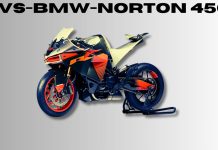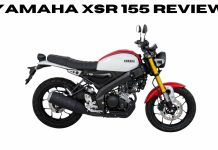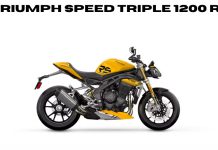Smart has long been a pioneer in urban mobility, consistently delivering compact, efficient vehicles catering to the needs of city dwellers. With the upcoming Smart #5, the brand is maintaining its heritage while taking a bold leap into the future.
The official interior design sketches of the Smart #5 reveal a space where technology, luxury, and sustainability come together.
A New Design Philosophy: Where Minimalism Meets Innovation
Smart aims to appeal to urban drivers who value style and functionality. The interior design sketches highlight a modern, minimalist approach, focusing on simplicity and elegance.
This design philosophy ensures the Smart #5 remains practical for everyday use while offering an aesthetically pleasing environment for drivers and passengers.
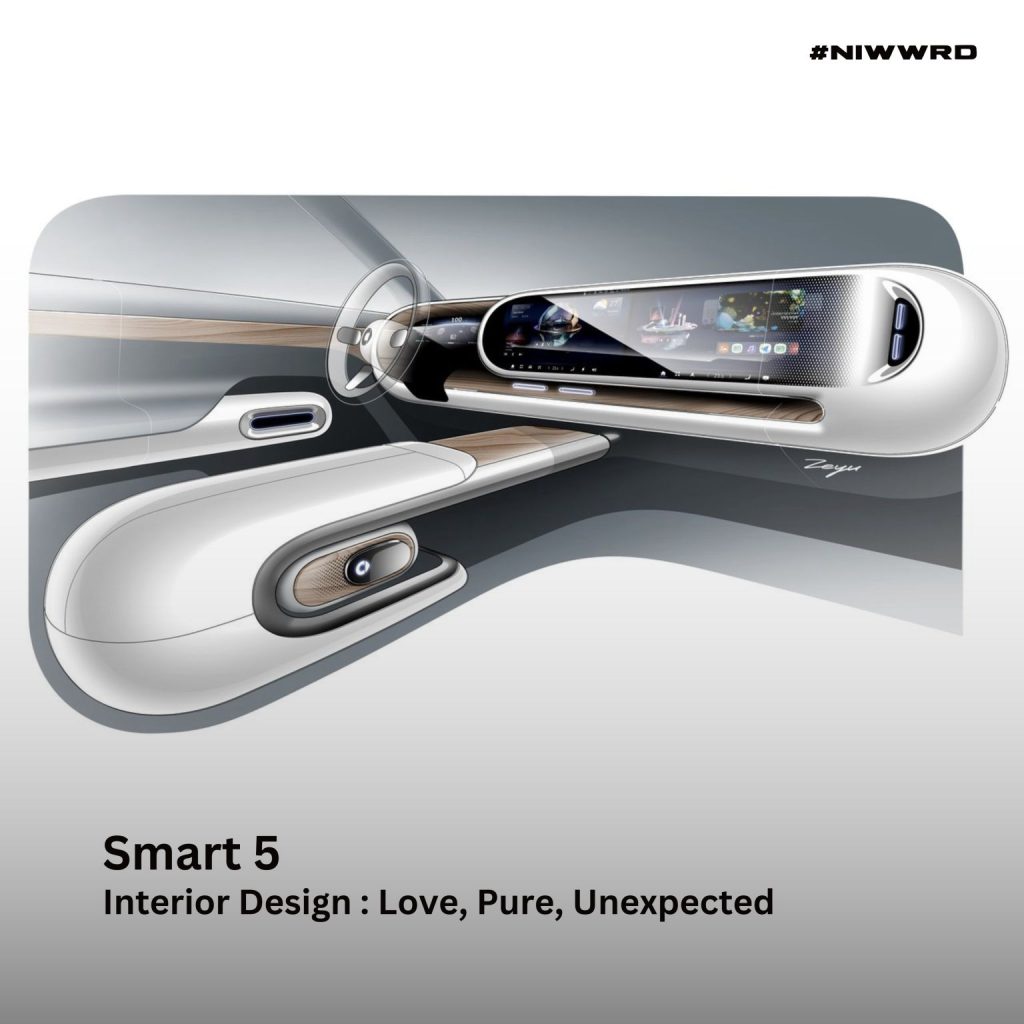
Strengths: Clean Lines and Open Spaces
One of the standout features of the Smart #5’s interior design is its clean lines and uncluttered layout. The dashboard has a sleek, horizontal design enhancing the sense of space within the cabin. This minimalist approach is visually appealing and functional, as it allows for better ergonomics and ease of use.
The floating digital display at the center of the dashboard is a key feature, serving as the hub for the vehicle’s infotainment and control systems.
Design choice eliminates the need for numerous physical buttons, reducing clutter and creating a streamlined look. It also suggests an emphasis on touch-based controls, which are intuitive and user-friendly.
Weaknesses: Potential Over-Reliance on Digital Interfaces
While the focus on digital interfaces aligns with modern trends, it may present challenges for some users. Over-reliance on touch screens can lead to distractions, as drivers may need to look away from the road to interact with the system.
The lack of physical buttons, which some drivers prefer for their tactile feedback, could also be a downside. Smart will need to ensure the digital system is highly responsive and easy to navigate to mitigate these concerns.
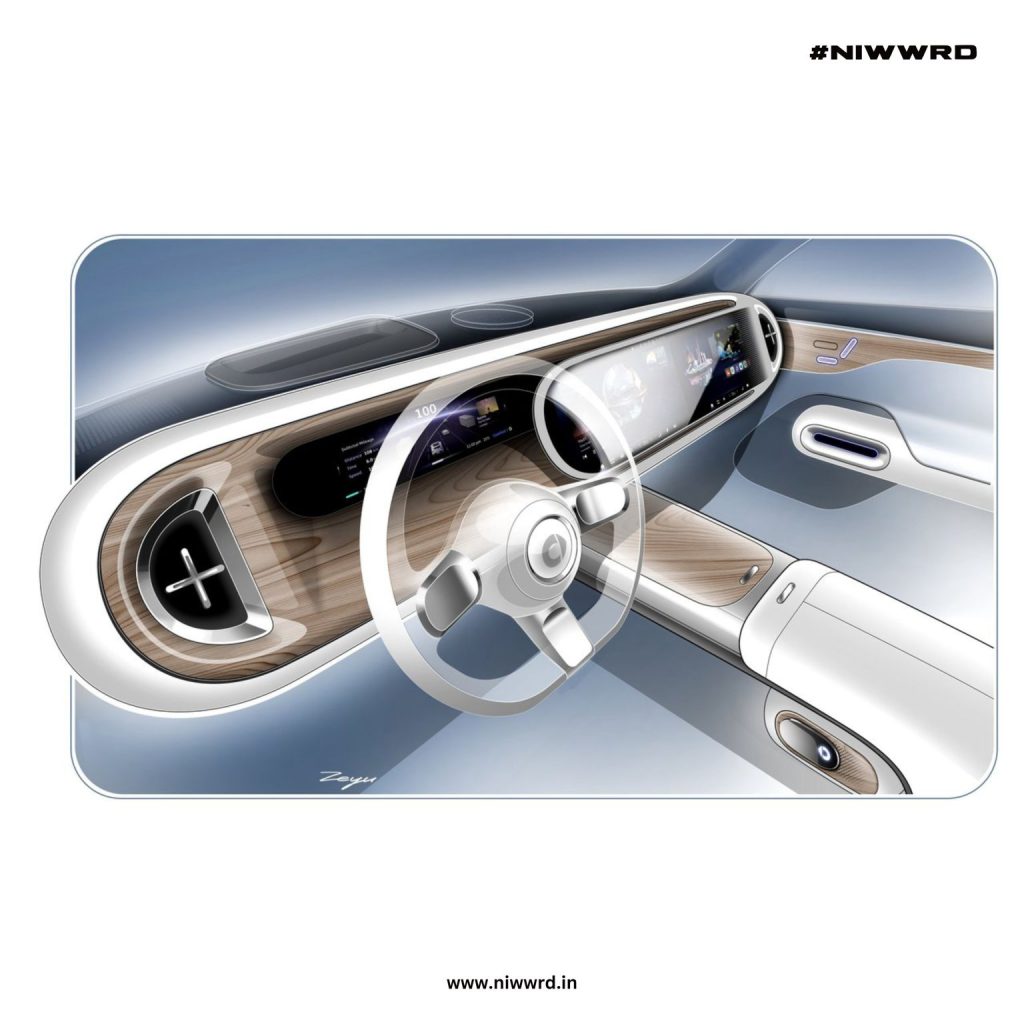
Embracing Sustainability: Eco-Friendly Material Choices
Sustainability is at the heart of Smart’s design ethos, and the Smart #5 reflects this commitment. The interior is expected to feature high-quality, eco-friendly materials, demonstrating luxury and sustainability coexist. This focus on green materials aligns with the growing consumer demand for environmentally conscious products.
Strengths: Luxurious and Sustainable Materials
The use of sustainable materials gives the Smart #5 a competitive edge. By incorporating textiles and soft-touch plastics sourced responsibly, Smart positions itself as a brand cares about the environment. These materials contribute to a greener planet and provide a luxurious feel, enhancing the overall cabin experience.
Furthermore, the emphasis on sustainability can appeal to a broader market, attracting environmentally conscious consumers who may not have previously considered a Smart vehicle. This strategy aligns with the broader automotive industry’s shift towards greener practices, helping Smart stay relevant in an evolving market.
Weaknesses: Durability and Perception
While sustainable materials are a major selling point, they can sometimes raise concerns about durability and quality. Consumers may question whether these materials will stand the test of time, especially in a vehicle meant for daily urban use. Smart will need to assure potential buyers its materials are durable and capable of withstanding wear and tear.
Moreover, some consumers might perceive eco-friendly materials as less luxurious than traditional materials like leather. Smart must find a balance between sustainability and the luxurious feel expected from a premium vehicle to appeal to its target market effectively.

Space Optimization: Smart’s Clever Use of Compact Dimensions
One of the biggest challenges with compact vehicles is maximizing interior space. The Smart #5’s interior design sketches suggest the brand has paid careful attention to space optimization, ensuring a roomy feel despite the vehicle’s small footprint. This clever use of space is essential for urban drivers who need a vehicle navigating crowded streets without sacrificing comfort.
Strengths: Versatile Seating and Storage Solutions
The Smart #5’s interior is designed with flexibility in mind. The seating layout allows for multiple configurations, catering to various needs, from carrying passengers to transporting larger items. The ergonomic seats provide comfort and support, making longer journeys more pleasant.
Including smart storage solutions further enhances the functionality of the interior. Compartments and hidden storage areas help keep the cabin organized, a crucial feature for a vehicle often used for city errands. This focus on practicality ensures the Smart #5 remains a viable option for urban drivers needing a versatile vehicle.
Weaknesses: Space Limitations of a Compact Vehicle
Despite the clever design, the Smart #5’s compact dimensions will inevitably limit its interior space. Taller passengers may find the headroom and legroom somewhat restricted, which could be a drawback for those planning to use the vehicle for longer trips. While the Smart #5 is primarily designed for urban use, it may face limitations when accommodating more passengers or larger items.
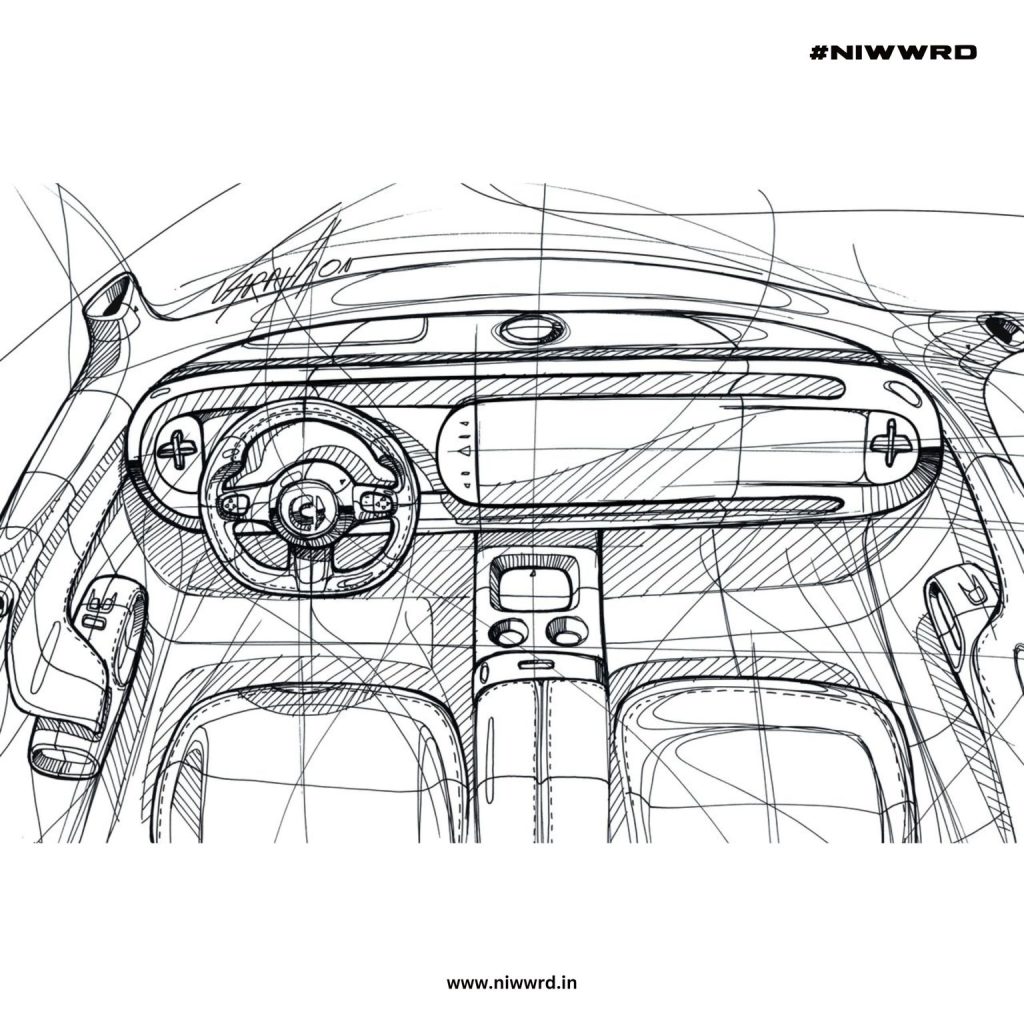
Advanced Technology: The Digital Ecosystem of Smart #5
Technology is a key component of the Smart #5’s appeal. The interior design sketches indicate the vehicle will be equipped with cutting-edge technology, making it a competitive player in the compact electric vehicle market. Smart is clearly focused on providing a seamless digital experience, enhancing both convenience and connectivity for the driver.
Strengths: Integration of Digital and Smart Features
The Smart #5’s digital ecosystem is designed to keep drivers connected. The central digital display serves as the main interface for various functions, from navigation to entertainment. This integration of technology simplifies the driving experience, reducing the need for multiple devices and providing a central hub for all digital interactions.
Advanced connectivity features, such as wireless smartphone integration and over-the-air software updates, ensure the Smart #5 remains up-to-date with the latest technology. These features enhance the driving experience and add value by extending the vehicle’s lifespan through regular software improvements.
Weaknesses: Learning Curve and Dependence on Technology
While the focus on digital interfaces offers many benefits, it may also present a learning curve for some users. Drivers who are not tech-savvy may find it challenging to navigate the digital ecosystem, leading to frustration and potential safety concerns.
Smart will need to ensure the system is intuitive and offers alternative control options for those who prefer more traditional interfaces.
Dependence on technology also raises concerns about reliability. Software glitches or failures in the digital system could impact the overall driving experience. Smart must prioritize robust testing and customer support to address any issues may arise with the vehicle’s tech features.
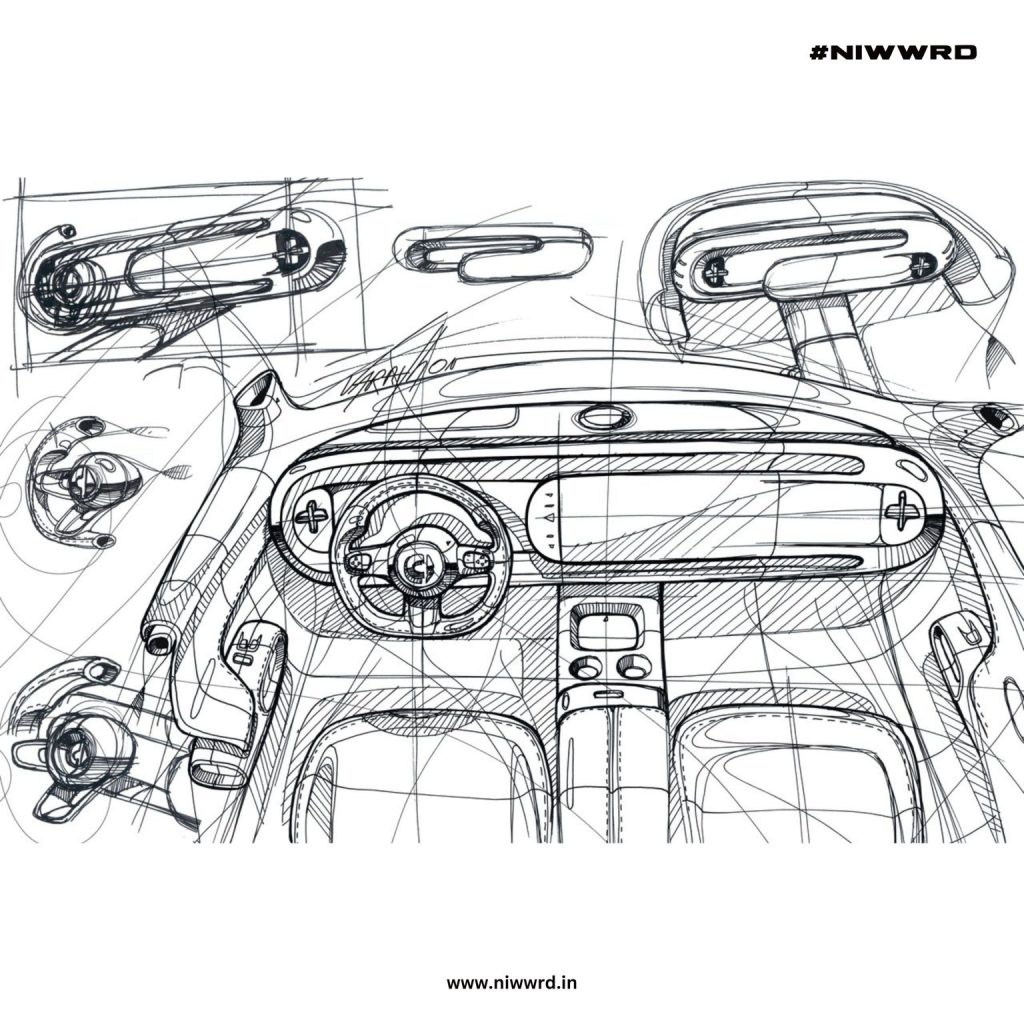
Strategic Positioning: Navigating a Competitive Market
The Smart #5 marks a significant step in Smart’s evolution, moving the brand into a premium and competitive segment. The compact electric vehicle market is crowded, with established players like Tesla and new entrants vying for attention. Smart’s challenge lies in differentiating the Smart #5 and making it a compelling choice for consumers.
Strengths: Aligning with Consumer Trends
The Smart #5 is well-positioned to tap into current consumer trends. The focus on sustainability, advanced technology, and compact design aligns with the needs of urban drivers and environmentally conscious consumers. Smart’s emphasis on creating a luxurious, practical vehicle gives it a unique edge in the market.
Collaborations with renowned designers like Gorden Wagener enhance the vehicle’s appeal, associating the Smart #5 with high-end design and innovation. This strategic move helps elevate the brand’s image and attract a more discerning clientele.
Weaknesses: Brand Perception and Market Competition
Despite its strengths, Smart faces challenges in shifting its brand perception. Historically known for compact, economical cars, Smart needs to convince consumers of its ability to deliver a premium product. Competing against established luxury brands will require Smart to prove the Smart #5 offers comparable quality and features.
Additionally, the compact electric vehicle market is highly competitive. Brands like Tesla have already established a strong presence, making it difficult for newcomers to gain a foothold. Smart will need to leverage its unique selling points and market the Smart #5 effectively to capture consumer interest.
Conclusion: Smart #5’s Interior Design—A Balanced Approach to Modern Urban Mobility
The Smart #5’s interior design represents a bold step forward for the brand, blending modern aesthetics with practical functionality. By focusing on clean lines, sustainable materials, space optimization, and advanced technology, Smart has created an interior meeting the needs of today’s urban drivers.
However, the vehicle also faces challenges, such as potential over-reliance on digital interfaces and the limitations inherent in a compact design.
The Smart #5 is a statement about the future of urban mobility. By embracing innovation and sustainability, Smart is setting new standards in the compact electric vehicle market.
As the automotive landscape continues to evolve, the Smart #5’s interior design will play a crucial role in shaping the brand’s success and defining the future of city driving.
By staying true to its core values and addressing potential weaknesses, Smart can ensure the Smart #5 is a symbol of progress and a practical, enjoyable vehicle for the modern urban environment.
The journey of the Smart #5 is just beginning, and with its promising design, it is poised to make a lasting impact on the world of electric vehicles.



